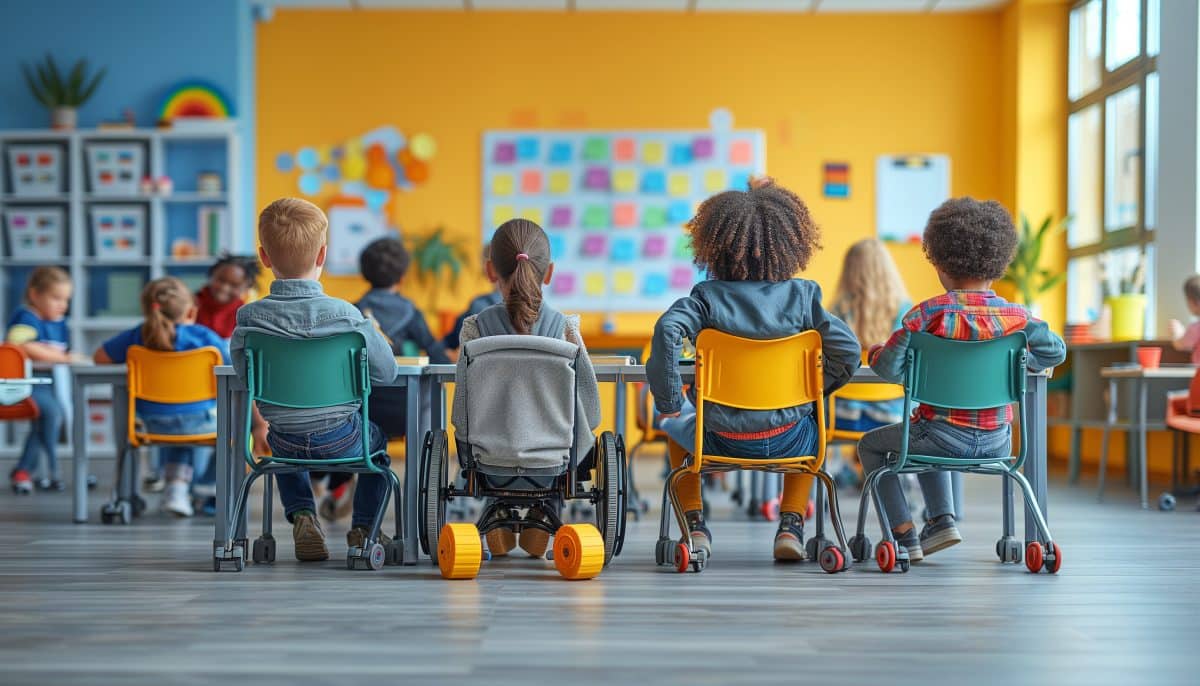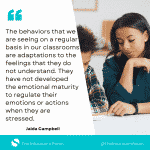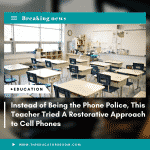I learned so much from a recent episode of Jay Shetty’s On Purpose podcast featuring an interview with Trevor Noah that I felt the need to write a second article. Many of the issues discussed were ones I could relate to based on my experiences in education. As a teacher, I strive to ensure my students know that I love them and want them to feel safe in my classroom. In this interview, Noah introduced the topic of the importance of safety in contrast to love.
“We all have a different idea of what safety means…One of the widest discoveries I made in therapy was…I am particularly comfortable in chaos…I find a beautiful hum of peace that comes over me…and yet the flip I also discovered was true is when there is calm, now I am in chaos. And so I learned that I felt safest where most people didn’t, and I felt least safe where most people would.” (Noah)’
Peace in the midst of chaos.
This quote made me reconsider my entire perspective on safety and chaos. My thoughts immediately went to the environment I try to build in my classroom. Like most teachers, we try to find ways to create safe spaces within our classroom walls. There is often chaos in the halls of our schools, in our students’ communities, or even in their homes. We strive to be a place where they can find calm, peace, and safety. Admittedly, I often enjoy the controlled chaos of lively discussions, engaging banter, group work that requires a lot of movement, and even games that might make my class seem “loud.” I never considered that this type of environment might actually be more comfortable for students who are used to “chaos”, and actually prefer this over quiet, controlled classrooms. Can “chaos” be a form of safety? Is this why some of my students seem uncomfortable, unfocused, and unmotivated with classes that have no movement, no activities, and no noise besides the sound of the teacher lecturing in front of the room? Noah continued to explain the reasons behind his views about safety.
“And I learned a lot of [the idea of safety] came because growing up in a home where there was domestic abuse, the silence meant you didn’t know. Anything could happen and any moment, what’s going on, you don’t know. But when something is happening,all you have to do is deal with it…If I hear gunshots, then I know where the shooting is coming from, so I know where to run away to.”
Safety does not have a single, universal definition.
As a teacher, I often have to remind myself that my students are bringing a variety of traumas to our classrooms. I have started to recognize that even those who come from “stable” homes may have experienced hidden traumas amplified by the pandemic. Whether they come from single-parent households or multi-generational homes, experience financial insecurity, have witnessed multiple deaths in their families or communities, or are struggling with mental health issues, each of these situations shapes their unique perspective on what it means to feel safe. As educators, we are responsible for considering the diverse experiences our students bring into the classroom and modifying our instruction, lessons, activities, and classroom environments to ensure that all students feel a sense of safety when they enter.
Flexibility in instructions can help students feel safe.
Having the confidence to achieve success in the classroom is a form of safety. Differentiating instruction could help teachers accomplish this goal. This could be as simple as creating routines and structures but also allowing room for the ability to “shift” or pivot. This could be as simple as offering various ways for students to demonstrate their understanding of the content, beyond traditional formative assessments like tests. This could be as simple as having some days be quiet and others louder, ensuring that each student experiences an environment they feel comfortable in at least part of the week.If the pandemic taught us nothing else, it taught us the need to be flexible in teaching our students.
So where does love come in?
“What I realized was that safety was such a base need of humans that until you fulfill that need…trying to give love (in a very genuine way) to people I just felt like it couldn’t fully be received because I realized most people probably have never even received love maybe from their parents or their family from the people they expected to love them so when someone unexpected comes along and tries to show you love, it’s like what is going on or where does this land.” (Jetty)
From the mouth of babes
I asked my students this essential question: What is more important, safety or love? Here are a few of their answers.
“First off, I’d say safety. But I think true love is [a form of] safety. Someone can have love for you and still be [able to] hurt you.”
“Safety because that’s their job above all else. Plus you can’t expect a teacher to love everyone. I mean come on.”
“I don’t expect my teachers to love me, that’s not what they went to school for. I enter the classroom knowing that I am safe, and that is enough for me.”
“Love is more likely to lead to safety, but safety never makes me think of love.”
“I think love goes hand in hand with both so I think love is more important because if you love someone or something you want to keep it safe.”
And of course, my students asked me for my opinion as well.
“As a teacher I would initially say safety because I want my students to feel safe first, and then understand that my desire to keep them safe comes from a place of love.”
Reflection
After listening to the interview with Noah and Jetty, and after listening to my students, I am not sure I can prioritize safety over love, or vice versa. It is my responsibility to not only love my students but also create a safe environment to the best of my ability. In my pursuit of being a teacher who positively impacts my students’ lives, both love and safety are essential to achieving that goal. Both the interview and my students’ insights have made me realize that neither one should take precedence over the other. I believe that simply knowing their teachers are having conversations about how to ensure they feel both loved and safe is enough to make students look forward to coming to school every day.
Selah





